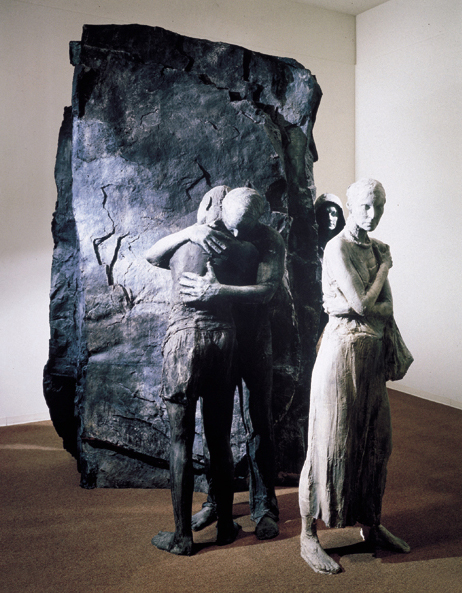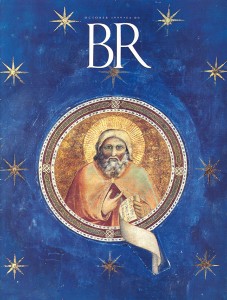
And Sarah said to Abraham, “Cast out that slave-woman and her son, for the son of that slave shall not share in the inheritance with my son Isaac” (Genesis 21:10).
In Genesis 16, the childless Sarah, afraid that her husband Abraham will die without an heir, gives him her maid Hagar as a surrogate. When Hagar conceives, Sarah, believing that she has been lowered in her maid’s esteem, treats Hagar harshly and forces the maid to run away. God intervenes, Hagar returns, and she bears Abraham a son, Ishmael. But when Ishmael is 14, Sarah, at the age of 90, finally bears her own child. Once again, Sarah sends Hagar into the wilderness, as recounted in Genesis 21.
In this sculpture by George Segal, Abraham bids farewell to Ishmael, clasping his firstborn to his chest. Yet he holds his body away from the boy even as he leans forward, already distancing himself from that family and that life.
Hagar, at far right, cannot even watch as her son says goodbye to his father; but though turned away in pain, she remains defiant, her face set, her feet firm. She must accept that she is now an outcast, exiled to the desert by her own mistress, Abraham’s jealous wife Sarah.
As for Sarah herself, she is hiding, avoiding the scene, but watching—her expression betrays gladness and even some cruelty. The rock protects her from the others, just as Hagar’s arms protect her from her own feelings.
Already a library member? Log in here.
Institution user? Log in with your IP address.

